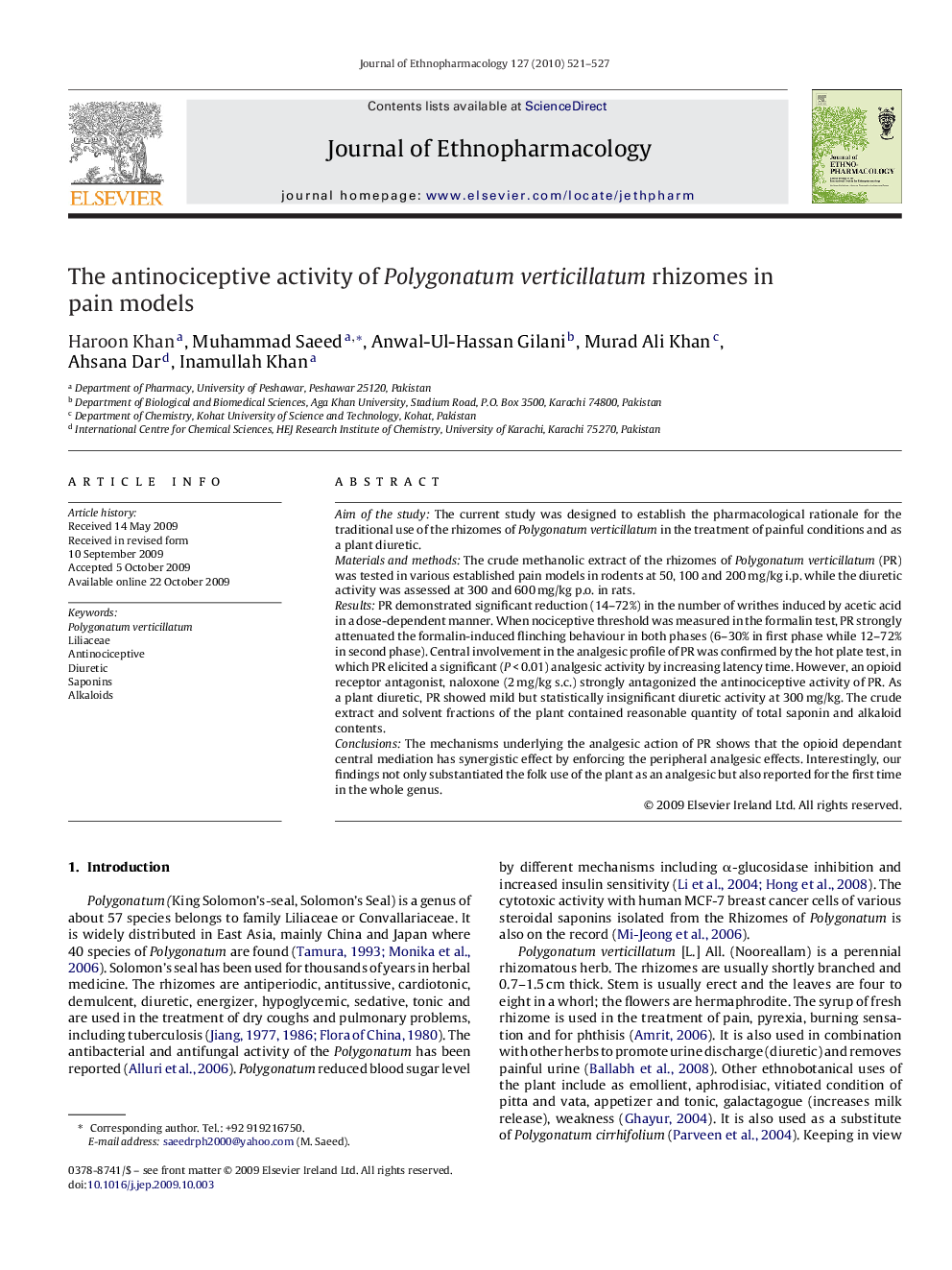| Article ID | Journal | Published Year | Pages | File Type |
|---|---|---|---|---|
| 2545925 | Journal of Ethnopharmacology | 2010 | 7 Pages |
Aim of the studyThe current study was designed to establish the pharmacological rationale for the traditional use of the rhizomes of Polygonatum verticillatum in the treatment of painful conditions and as a plant diuretic.Materials and methodsThe crude methanolic extract of the rhizomes of Polygonatumverticillatum (PR) was tested in various established pain models in rodents at 50, 100 and 200 mg/kg i.p. while the diuretic activity was assessed at 300 and 600 mg/kg p.o. in rats.ResultsPR demonstrated significant reduction (14–72%) in the number of writhes induced by acetic acid in a dose-dependent manner. When nociceptive threshold was measured in the formalin test, PR strongly attenuated the formalin-induced flinching behaviour in both phases (6–30% in first phase while 12–72% in second phase). Central involvement in the analgesic profile of PR was confirmed by the hot plate test, in which PR elicited a significant (P < 0.01) analgesic activity by increasing latency time. However, an opioid receptor antagonist, naloxone (2 mg/kg s.c.) strongly antagonized the antinociceptive activity of PR. As a plant diuretic, PR showed mild but statistically insignificant diuretic activity at 300 mg/kg. The crude extract and solvent fractions of the plant contained reasonable quantity of total saponin and alkaloid contents.ConclusionsThe mechanisms underlying the analgesic action of PR shows that the opioid dependant central mediation has synergistic effect by enforcing the peripheral analgesic effects. Interestingly, our findings not only substantiated the folk use of the plant as an analgesic but also reported for the first time in the whole genus.
Graphical abstractFigure optionsDownload full-size imageDownload as PowerPoint slide
